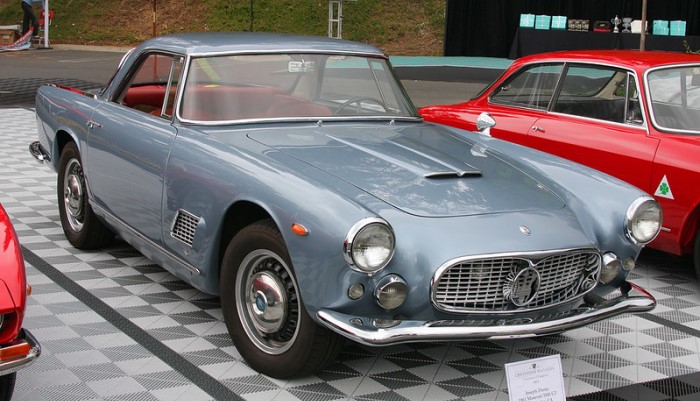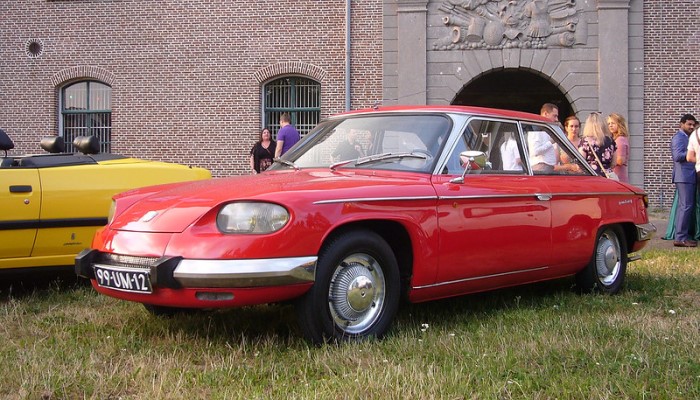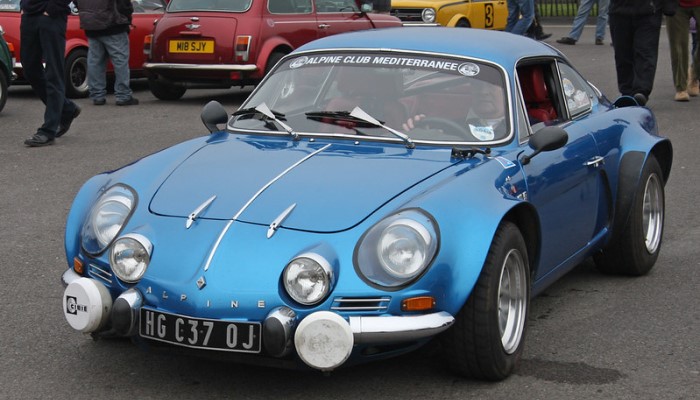Citroen SM
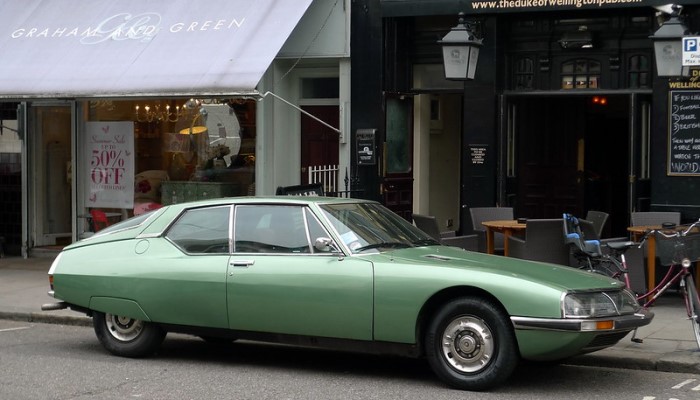
Photo: "Citroen SM" by DigitalLeica
Gallic Rocket
Citroen, having become a shareholder of Maserati in 1969, gained access to the technical potential of the famous Italian company. This allowed the French to realize a dream that haunted them after the end of the Second World War: to face off against German and British luxury car manufacturers.
Especially for the promising supermodel of the Fifth Republic (the project was code-named Sport Maserati, SM), engineers from Modena under the leadership of Giulio Alfieri created a 163 cu in (2,670 cc) 170-horsepower V6 engine, a more powerful version of which was subsequently used on the mid-engined Maserati Merak.
Designers Robert Opron, who had experience designing aircraft, and Jean Giret carried out the development of the body. Monsieur Opron's aviation practice led to an excellent result: the drag coefficient was only 0.33.
The teardrop-shaped body tapers noticeably towards the trunk, so that the rear track is 7,8 in (200 mm) smaller than the front. Notably, wind tunnel scavenging was not critical to achieving the benchmark and was carried out after the bodywork had been completed.
The front played a large role in the design of the car, with a transparent fairing under which there are six headlights.
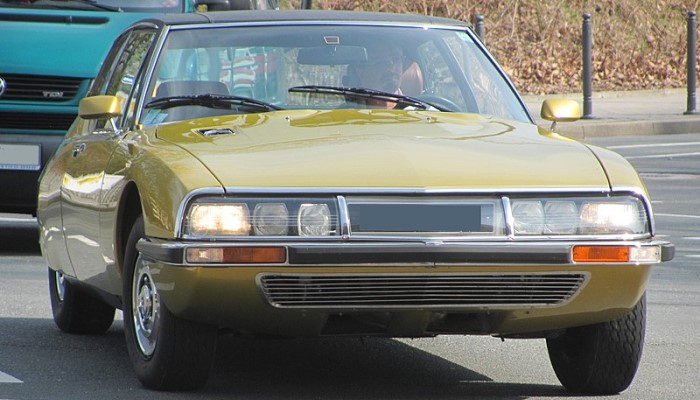
Two of them are fixed, and four turn after the front wheels and maintain the optimal level of the light beam, taking into account body vibrations.
However, for excellent aerodynamics, it was necessary to pay with a cramped rear seat and a limited amount of luggage space, which is not decisive for Gran Turismo cars.
A slightly overloaded rear end with chrome trim breaks the plastic style of the coupe, like in American models. Here, the French showed pragmatism. The image of Citroen in the United States began to weaken, so that the aesthetic preferences of Americans entered the list of priorities.
Premiere
The premiere of the Citroen SM took place in March 1970 at the Geneva Motor Show, and it appeared on the European market in the fall of that year.
Rave reviews from the press instantly made him a subject of national pride, but the solid price of 40,000 francs turned out to be an insurmountable barrier for the average Frenchman, who could only admire the colorful advertising booklets.
Genuine leather interior trim, power windows, a heated rear window, air conditioning and a first-class audio system - all this was great chic for its time.
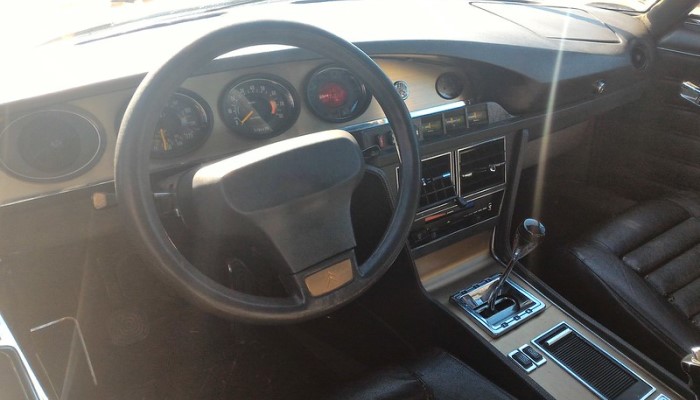
Citroen SM, based on a shortened Citroen DS platform, impressed contemporaries with hydropneumatic suspension and progressive power steering that took into account the speed of movement.
In terms of smoothness, the front-wheel drive SM has become the standard - it went through turns flawlessly, and when maneuvering at low speed during parking or rebuilding in urban conditions, the steering wheel can be twisted with literally one finger.
Although the SM was not built with a sporting eye in mind, it managed to win the 1971 Moroccan Rally under extreme conditions. (Crew: Deschaseaux Jean - Plassard Jean)
Innovations and Development
The first innovation appeared at the end of 1971 - carbon-fiber rims with five embossed beams were installed to order. Such a disk weighed a little over 4.5 kg, while the standard one pulled almost 23.
In July 1972, three carburetors gave way to a Bosch injection system, which led to an increase in power to 176 hp and a positive effect on fuel efficiency.
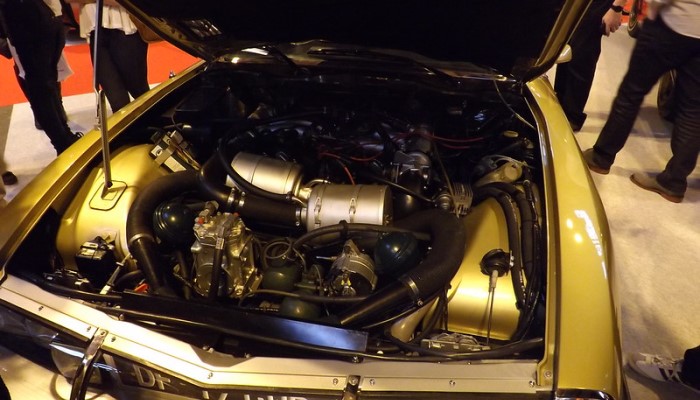
Photo: "Citroen SM Injection Electronique 1972" by andreboeni
Along with a 5-speed manual transmission, the Citroen SM began to be equipped with a 3-speed Borg-Warner "automatic", which was combined with a 176-horsepower engine with an increased displacement (181 cu in / 2,965 cc).
This modification was intended primarily for the United States market. The Americans, who had shown an interest in post-war French passenger cars after the introduction of the Citroen DS, were fascinated by the SM, which they called the "Gallic rocket" (top speed of 140 mph / 225 kph) and described as "a triumph of design and engineering".
Engine Specs
| Engine Type | V6 |
| Layout | Front engine, FWD |
| Displacement | 181 ci (2,965 cc) |
| Power | 176 hp |
| Power/Weight | 120 hp / Tone |
Performance
| 0-100 kph (0-62 mph) | 9,0 s |
| 0-160 kph (0-100 mph) | 25,4 s |
| Top Speed | 140 mph (225 kph) |
The most generous of epithets was the California edition of Motor Trend, which awarded the Citroen SM the title "Car of 1971". The experts of an authoritative magazine were especially impressed by the slight rough, mostly idling, sound of an aluminum 6-cylinder short-stroke engine.
While in Europe Citroen conquered motorists with its noiselessness, in the New World it was appreciated for the roar that came from under the huge hood.
Struggle With the Energy Crisis
As soon as the French, as they say, stuck their nose into the previously inaccessible sector of the global car market, an energy crisis broke out with an unprecedented increase in fuel prices and a maximum speed limit.
In addition, the company made a serious miscalculation - did not offer a model with controls located on the right, which did not allow SM to get a "registration" in the UK.
However, the English company Middleton Motors, on its own initiative, nevertheless released several copies of the SM with a "right" steering wheel.
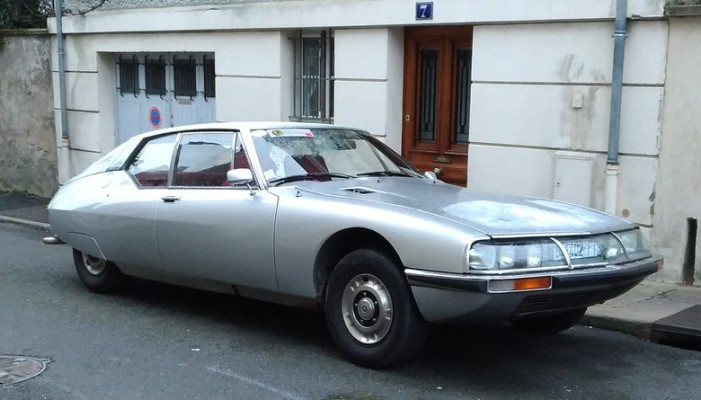
In October 1973, Citroen ceased operations in the American market, but the final verdict on the extravagant "Gallic Rocket" was made by the management of Peugeot, under whose control Citroen came in December 1974.
The new patron was attracted by the well-selling Citroen GS, as well as the brand new Citroen CX, so in the context of the growing crisis, the avant-garde SM fell into the category of unaffordable luxury.
In 1975, Peugeot ended production of the SM and parted ways with Maserati.
In five years, 12,920 cars were produced, including several sedans and convertibles built by specialized firms. Based on the Citroen SM, Chapron made two 4-door executive convertibles for the Elysee Palace.
It is noteworthy that Peugeot, which hastened to part with the SM model, is still not able to create a premium car that can compete with BMW, Mercedes-Benz, Jaguar, etc.
Citroen SM Today
The SM was considered to be supercar of its time, and was noted for its performance and handling as well as its good looks.
The Citroen SM is still highly sought after today, and they are a popular choice for car collectors. Values have steadily risen over the years, and the highest valued SM have exceeded $200,000.
The cars tend to be in the best condition when found in original condition, as modifications to these significant historical cars can sometimes drastically reduce their value.
It is not uncommon to find Citroen SM still driving on the road. The cars’ performance attributes are still appreciated by many, though due to their age they often require significant maintenance and repair costs.
Often, these vehicles will instead be found parked and on display in car shows or on some collector’s garage.
Overall, the Citroen SM remains an iconic car that is cherished and respected for its quality and forward-thinking design. Although the car was discontinued in 1975, it still inspires and attracts attention in today's market.

Unique Car Zone Team
A group of several fans of everything that moves on four wheels, a few article creators, a couple of marketing strategists, designers, web developers, and lots of coffee.




